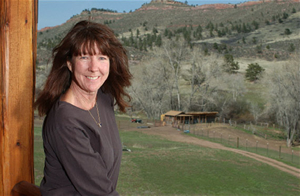From The Implosion Conspiracy (1973) by Louis Nizer:
"Guilt or innocence used to be determined by trial by ordeal. The accused would plunge his arm into boiling water to pick up a stone. Then bandages would be applied by a Catholic priest, who attended for three days. When unwrapped in his presence, if there was no scalding, he was innocent. Another ordeal was walking over nine rods of hot plowshares. Freedom depended on whether the accused's soles were not burnt. The theory that God would intervene in each case to do justice was finally abandoned by the Catholic Church and outlawed by Henry III in England in 1219.
There followed trial by combat. For centuries, duels with various weapons determined that the victor was righteous. To overcome the possibility that God might not always choose to play his part against the iniquitous, disputants were permitted to select representatives for combat.
The present jury trial, developed under Anglo-Saxon law, nurtured by Judeo-Christian ethics, was the result of a slow and painful evolutionary process.
Why twelve jurors? That number has a mystical tradition. There were twelve gods in mythical history, twelve tribes of Israel and twelve disciples. Whatever the number, the multiplicity of lay judgments is intended to establish an approximate cross-section of opinion, which tends to cancel out prejudices or undue sympathies.
Fear of tyrants, or even of the power of benevolent governments, is responsible for the extraordinary obstacles we place in the path of the prosecutor. The law has constructed a protective fence around the accused citizen. . . . Even if the jury believed they were guilty, it could not find them so, unless they believed them guilty 'beyond a reasonable doubt!' Thus, preponderance of evidence, which is all that is required in a civil case, is not enough. The scales must not just tip, they must tip decisively.
Even if that severe test is met, the jury must be unanimous. If one juror is unconvinced, there can be no verdict of guilty.
The defendants need not take the stand to defend themselves. If they did not, the jury might not draw any inference against them for failing to do so. The burden to establish their guilt rested entirely on the government and was not shared. . . . All litigants, including the government, stood equally before the law - so the jury was instructed.
Then there are rules of evidence, designed to weed out irrelevancies; hearsay (what someone else told the witness, when that someone is not available for cross-examination to test his veracity, and for the jury to observe him); conclusions rather than a statement of facts on which they are based, which prevent the jury from drawing its own conclusions; and hundreds of other precautionary rules which fill volumes marked EVIDENCE. . . .
Ceremonial tradition is as much a part of the judiciary as of royalty. In England, judges wear white curly wigs, which frame the most nondescript faces with wisdom. In France, lawyers wear black robes, with red or purple stripes to distinguish them from austere judicial robes. In the United States, formality has been gradually crowded out by the notion that democracy is equalization rather than equal opportunity for un-equals. The requirement that lawyers wear frock coats and striped pants when appearing before the Supreme Court of the United States or Appellate Courts has yielded to plain black or blue suits. Even judges sometimes leave their black gowns in the robing room.
So judges have denuded themselves of adornments, which some might well use to look impressive, and warrant the appellation 'Your Honor' or 'Your Lordship.'
Nevertheless, no matter who the judge is, there is that moment of quickened anticipation when a brightly badged attendant emerges from the judge's chambers . . . and calls out "Everyone, please rise."
. . . The law is rarely prescribed in terms which permit precise application. Interpretation equivalent to translation is required. What is "due process" . . . what does the definition of "negligence" mean when it is defined as conduct contrary to how a reasonable man would act under the circumstances? How would a reasonable man act when his automobile confronts a problem at an intersection, at a certain hour, in certain light, and with variable counterforces in flow?
Contrary to some misconceptions, the judge cannot find the law by looking it up in a book. He must look it up in himself. What he finds there has been implanted in his daily experiences from childhood on. His interpretive judgment is based on stimuli resulting from his religious, economic and social background. His relationship with his parents, his sisters and brothers and friends; his illnesses; his sexual experiences and growth; the toughness he acquires from collisions in the competitive world, and the shield he builds to prevent it from encroaching on the soft core essential to his ideals; everything he reads; every person he meets and every conversation he has; every admiration and hate he develops; every defeat and every triumph, often in trivial matters, which affect his psyche, not his worldly stance; these and infinitely more leave their marks inside him. Every man is a conglomerate enterprise, and his values and judgments derive from a mysterious jumble of life's acquisitions."
Louis Nizer (1902 - 1994) was a noted trial lawyer. His book "The Implosion Conspiracy," published in 1973, was about the trial of Julius and Ethel Rosenberg for conspiracy to commit espionage which took place in 1951.
































